Discovering Hverabrauð: Traditional Icelandic Bread
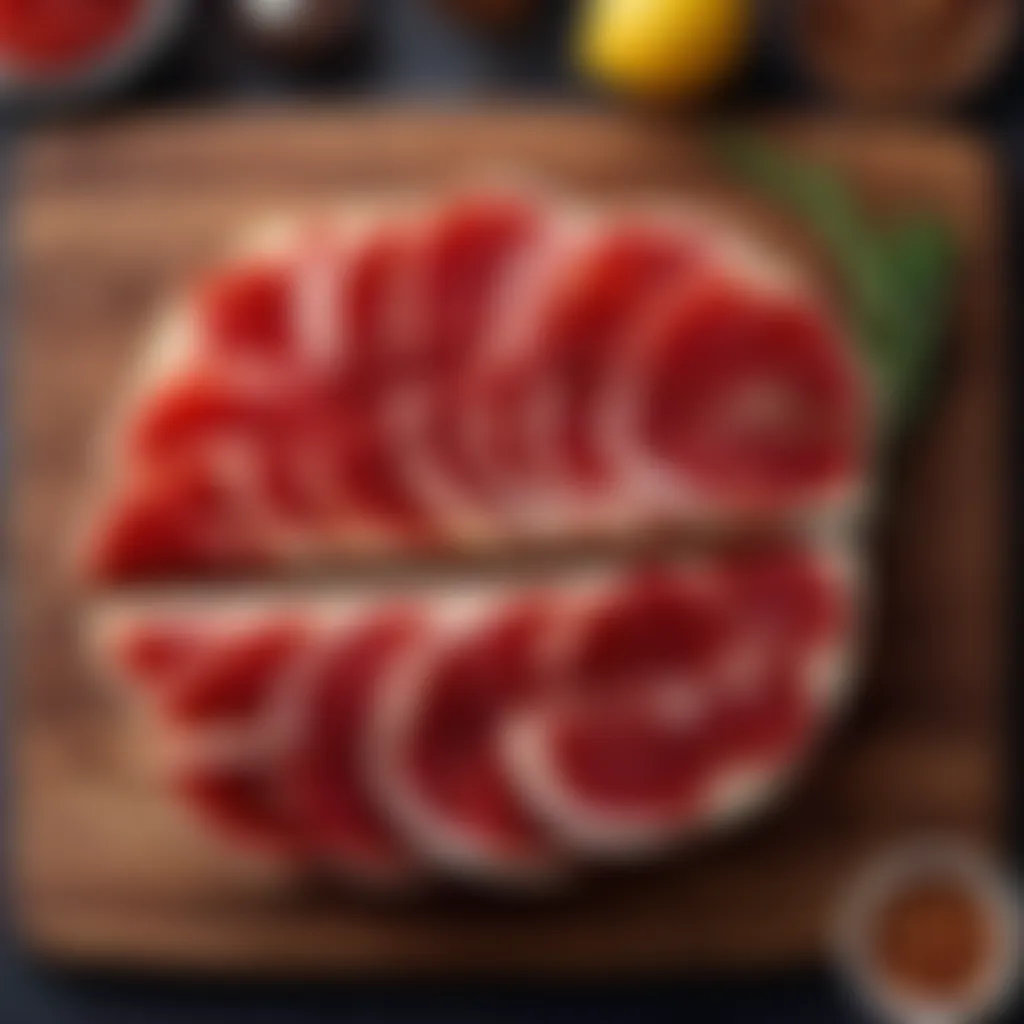
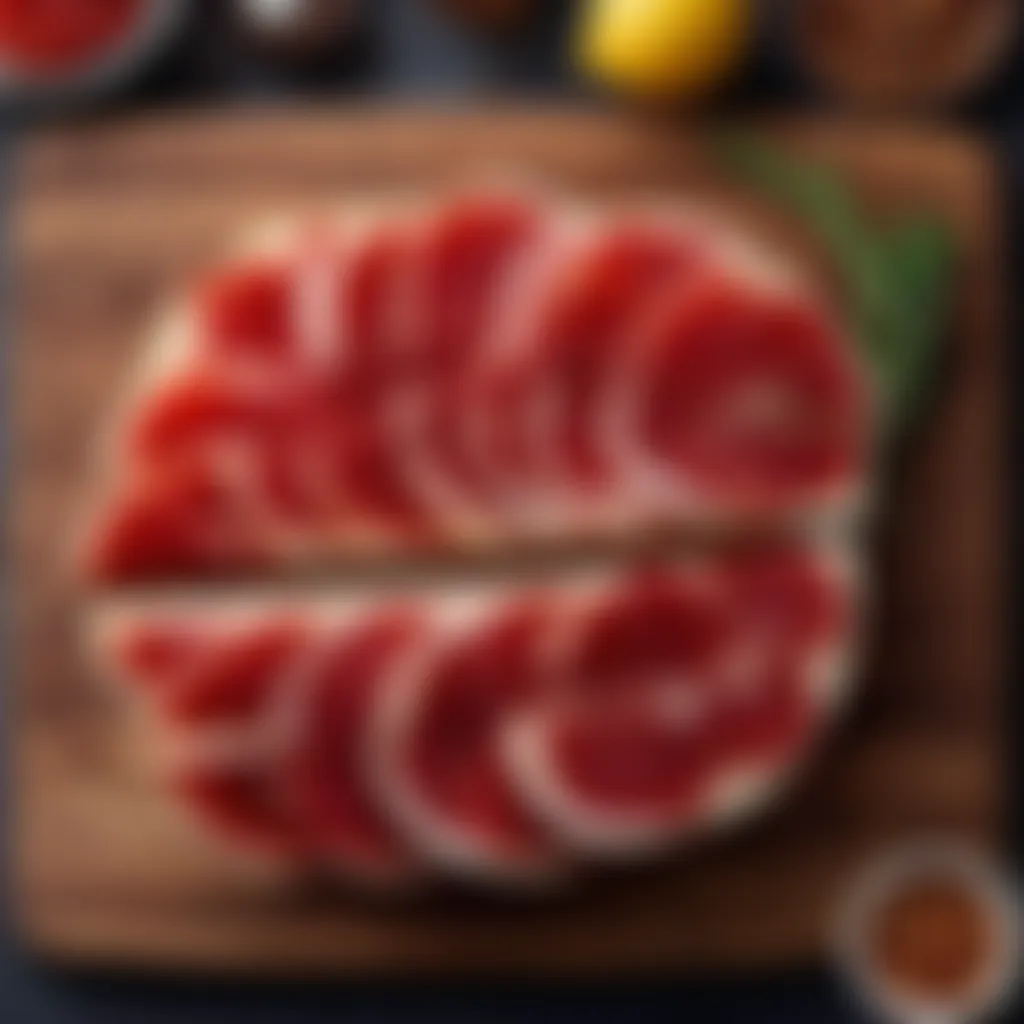
Intro
In the heart of Icelandic culture lies Hverabrauð, a type of bread that isn’t just a culinary delight, but a symbol of tradition and resilience. Known colloquially as "hot spring bread," this unique flatbread is famously prepared using geothermal heat, reflecting the resourcefulness of the Icelandic people amidst a landscape dominated by volcanic activity. The process is simple yet profound, resulting in a bread that embodies the spirit of the land.
With roots stretching back centuries, Hverabrauð is traditionally enjoyed with a variety of toppings, allowing for diverse culinary experiences. Whether served alongside smoked lamb or slathered with butter, this bread has carved its niche as a staple in Icelandic households and gatherings.
Now, let’s roll up our sleeves and explore the intricate details of making this beloved bread, starting from the very basics: the ingredients.
Prologue to Hverabrauð
Hverabrauð, often fondly referred to as the bread of the geothermal springs, holds a unique place in Iceland's culinary landscape. This introduction serves not just as a prelude but as a doorway into understanding the pivotal role that this traditional bread plays in Icelandic culture and daily life. The significance of Hverabrauð transcends its basic function of nourishment; it is woven deeply into the social and cultural fabric of the nation.
Cultural Context of Hverabrauð
In the rugged terrains of Iceland, where the earth is alive with geothermal energy, cooking methods have adapted to harness natural resources. Hverabrauð is traditionally cooked in the ground, utilizing the geothermal heat found in certain areas, like Hveravellir. This method made it a practical choice, allowing families to prepare their food during long journeys or days spent in the wilderness.
The bread often emerges as a symbol of community, gathering, and tradition. Families would frequently come together during preparations, sharing stories and laughter while waiting for the bread to bake. Such a practice fosters a sense of togetherness that echoes the essence of many cultures around the globe.
Definition and Characteristics
In simpler terms, Hverabrauð is a dark, dense bread, rich in flavor and texture. Characterized by its unique preparation, it stands apart in aesthetics and taste compared to standard bread varieties. The use of rye flour, often mixed with other ingredients like barley or oats, gives it a distinctively earthy flavor.
Texturally, Hverabrauð is quite hearty, allowing it to hold up well against robust toppings, which is essential in Icelandic cuisine, where fish, meats, and cheeses reign supreme. Additionally, the slow-baking process in hot soil—or, in modern times, in an oven—imparts a unique smokiness that isn't easily replicated by regular baking methods.
Each loaf of Hverabrauð is more than just food; it’s a story of land, culture, and community, inviting everyone to partake in a tradition that has stood the test of time and continues to be cherished by generations.
"Bread is the staff of life," and in Iceland, Hverabrauð serves as a testament to that truth, providing sustenance and warmth in both physical and cultural senses.
Historical Significance
The historical significance of Hverabrauð cannot be overstated. This bread is not just a staple food; it is a symbol steeped in Icelandic identity. Understanding its roots and evolution provides a glimpse into the resilience and adaptability of Icelandic culture through centuries of hardship.
Origins of Hverabrauð
The origins of Hverabrauð trace back to the harsh climate and landscape of Iceland. Ancient methods of cooking and baking were often dictated by the environment. Hverabrauð, known in English as "hot spring bread," gets its name from the geothermal energy that the Icelanders tapped for cooking. Early settlers, facing the challenges posed by a short growing season, formulated a way to use the steam from hot springs to bake their bread quite literally underground.
This was not merely an act of culinary innovation but a necessity—a way of life for those early folks. It was common for families to prepare the dough in the early morning and bury it near the warm geothermal areas. As simple as it sounds, this process was a lifeline, allowing them to enjoy a nourishing wheat bread even in the bitter cold of winter. Without this ingenious method, many Icelandic people might have struggled even more to find food during the long, dark months.
Evolution Over Time
As time wandered on, the techniques for making Hverabrauð evolved without losing its core. In the 20th century, as baking technologies advanced, Icelanders began transitioning from traditional methods to more modern baking practices. However, the essence of Hverabrauð remained intact. Many homes still practice the old ways, keeping the tradition alive amidst the surge of contemporary culinary influences.
Today, you can find Hverabrauð in a variety of forms, from the underground-cooked traditional loaf to oven-baked varieties. This adaptability signifies how deeply rooted the bread is in Icelandic culture while allowing it to fit into the fast-paced modern world. People now enjoy it not just as sustenance but as a connection to their heritage—a mark of pride and history on their plates.
"Hverabrauð serves as a culinary bridge, linking the past with the present of Icelandic cuisine."
The bread’s trajectory reflects not just changes in food production, but broader shifts in Icelandic society, as well. It embodies a culture that has embraced change while honoring its roots. Hverabrauð remains a beloved dish in modern Iceland, gracing tables during festive occasions and family gatherings, proving that while ingredients may vary over time, the heart remains the same.
Key Ingredients
In the realm of any culinary creation, the essence often lies in the ingredients themselves. When it comes to making Hverabrauð, the traditional Icelandic bread, understanding the key components is crucial. These ingredients not only give the bread its distinctive flavor and texture but also connect it to Iceland's rich cultural heritage. Using the right elements can make or break your baking experience. This section will delve into the primary ingredients used in Hverabrauð and highlight their roles in the creation of this beloved bread.
Primary Ingredients Used
Hverabrauð is a simple yet delightful bread, characterized by its unique cooking process. Here are the primary ingredients you will need:
- Rye flour: The backbone of Hverabrauð, rye flour lends a deep flavor and dense texture. It’s rich in fiber and helps in the fermentation process, giving the bread its signature characteristics.
- Wheat flour: Though less dominant than rye, adding a bit of wheat flour can improve the bread’s structure and provide lightness.
- Yeast: A small amount of yeast is essential for leavening, allowing the bread to rise slightly during the cooking phase.
- Water: Water regulates the moisture content, allowing for dough consistency that is neither too dry nor too wet.
- Salt: Salt is critical, enhancing the overall flavor while also helping in yeast activity and dough strength.
- Sugar or honey: Depending on personal preference, some versions might include a little sugar or honey to balance the earthy flavors of the rye.
The magic of Hverabrauð lies in how these ingredients come together, creating a loaf that is rich in both flavor and tradition.
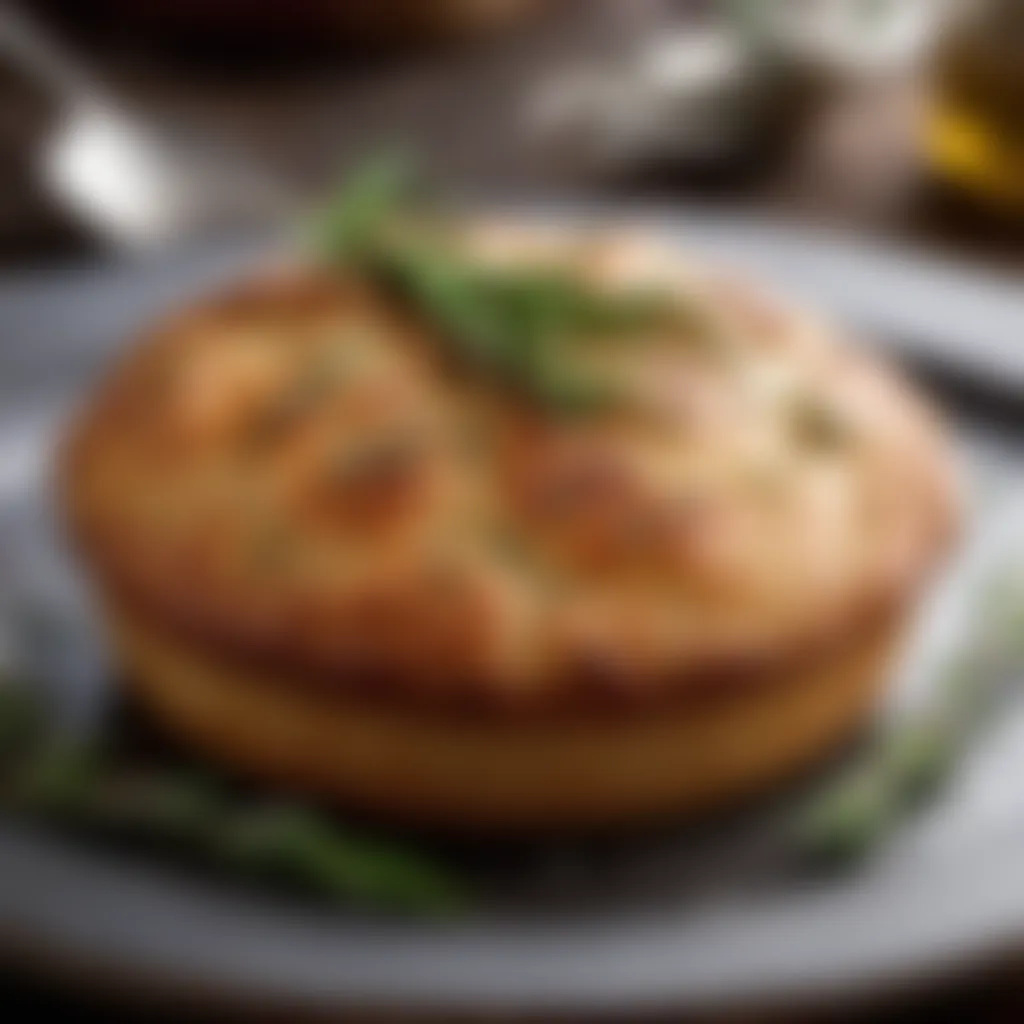

Role of Each Ingredient
Each ingredient plays its part in the symphony of flavors that is Hverabrauð. Understanding their roles can elevate your baking to new heights.
- Rye flour:
- Wheat flour:
- Yeast:
- Water:
- Salt:
- Sugar or honey:
- Provides the characteristic nutty flavor and hearty texture.
- Is high in nutrients, aiding not just the taste but the health benefits as well.
- Enhances the overall texture, softening the dense nature of pure rye.
- Contains gluten, which improves the elasticity and rising potential of the dough.
- Though used sparingly, it’s essential to get that subtle lift, giving the bread a slight airy quality.
- It also contributes to flavor development during fermentation, ensuring a complex profile.
- Dissolves the salt, activates the yeast, and combines with flours to form the dough.
- Plays a critical role in achieving the right consistency, which impacts the texture of the final product.
- Balances the flavors and inhibits overly rapid yeast activity, providing a controlled rise.
- It’s a flavor enhancer that makes all the other ingredients shine.
- Provides a touch of sweetness, which pairs beautifully with the deep notes of the rye.
- Aids in browning during cooking, creating a pleasant crust.
When you take the time to appreciate the individual roles of these ingredients, you can understand why Hverabrauð has stood the test of time in Icelandic cuisine. Cooking is often about respect for the ingredients, and this traditional bread exemplifies that notion perfectly.
"A good chef does not just cook; they understand their ingredients, integrating them into a dance of flavors and textures."
The synergy of these components is what leads to a successful Hverabrauð. Get to know them well, and your efforts in the kitchen will surely be rewarded.
Preparation Techniques
Understanding the intricacies of preparation techniques is crucial when it comes to making Hverabrauð, as these methods not only contribute to the final flavor and texture of the bread but also reflect its cultural richness. Mastering these techniques helps in respecting the heritage surrounding this Icelandic staple and embracing its authenticity. The choice of method can alter the very essence of the bread, thus ensuring the integrity of each loaf created.
Traditional Cooking Methods
When it comes to making Hverabrauð traditionally, the emphasis has been on simplicity and resourcefulness. The earliest Icelandic bakers often relied on geothermal heat to cook their bread, as shown in the thermal fields of the country. This unique method not only infused the bread with a distinct flavor but also showcased an innovative way to utilize the natural resources available.
The following aspects illustrate the traditional cooking methods of Hverabrauð:
- Baking in Geothermal Holes: Bread was often wrapped in leaves or burlap and buried in hot springs. The bread would bake slowly, absorbing minerals and flavors from the earth, resulting in a moist, dense loaf with a crust that tells stories of its earthen origins.
- Use of Wooden Forms: Dough was shaped into round loaves and placed in wooden molds to retain structure. This technique kept the bread from spreading too thin, ensuring a delightful bite.
- Cooking on Hot Stones: In situations without access to geothermal heat, bakers adapted by using heated stones. The bread would be placed on these stones, sometimes even covered with more stones for a consistent heat distribution.
Each of these methods not only highlights a connection to the land but also underscores the community's reliance upon natural elements to craft this iconic bread, making it a true labor of love.
Modern Adaptations in Preparation
In today’s fast-paced world, certain modern adaptations have emerged while still respecting the origins of Hverabrauð. Current methods incorporate technology and convenience but aim to keep the flavor profile close to its roots. This shift makes Hverabrauð more accessible to the home cook while maintaining its heritage. Here’s how preparation has evolved:
- Oven Baking: Many now choose to bake Hverabrauð in conventional ovens. This method enhances ease and consistency, ensuring rise and a fine texture. Set the oven to a low heat to mimic a traditional slow-baking method, which helps preserve the flavor.
- Bread Machines: Utilizing bread machines allows for precise control over mixing, kneading, and temperature. Though it strays from tradition, this technique simplifies the baking process tremendously, making it easy for new bakers to tackle the craft.
- Ingredient Substitutions: Some modern bakers experiment with various flours or add seeds such as sunflower or pumpkin for additional nutritional benefits. These adaptations cater to contemporary tastes while still producing a Hverabrauð that echoes its traditional roots.
With these modern techniques, it is crucial to remain faithful to the bread's essence. The taste of Hverabrauð should still evoke the rich Icelandic landscape, even if some steps are altered. In a sense, these adaptations celebrate the spirit of innovation while honoring the past.
Step-by-Step Hverabrauð Recipe
The journey of creating Hverabrauð is an experience steeped in tradition and care. This step-by-step recipe is not just a guideline but a doorway into the heart of Icelandic culture, capturing the essence of its storied past. Each element—be it the ingredients or the preparation—plays a pivotal role in crafting this unique bread. Following the steps closely ensures not only a successful baking venture but also a deeper appreciation for the culinary art of Iceland.
Ingredients List
To kick off your Hverabrauð-making adventure, you’ll need to gather a few key ingredients. As with any traditional recipe, the authenticity shines through when you use quality components:
- Rye flour: The star of the show, this gives Hverabrauð its distinctive flavor and dark color.
- Baking powder: Helping the bread achieve its fluffy texture is critical; without this, the bread turns dense.
- Salt: Just a pinch is sufficient to enhance the overall flavor profile. Too much and it could overpower the bread’s natural taste.
- Water: This is essential, as it binds the flour and the other ingredients together, creating a cohesive dough.
- Optional spices: Some recipes include caraway seeds or even a hint of cumin for extra flavor.
Preparation Steps
With the ingredients in hand, the next step is preparation. This phase requires patience and a touch of creativity:
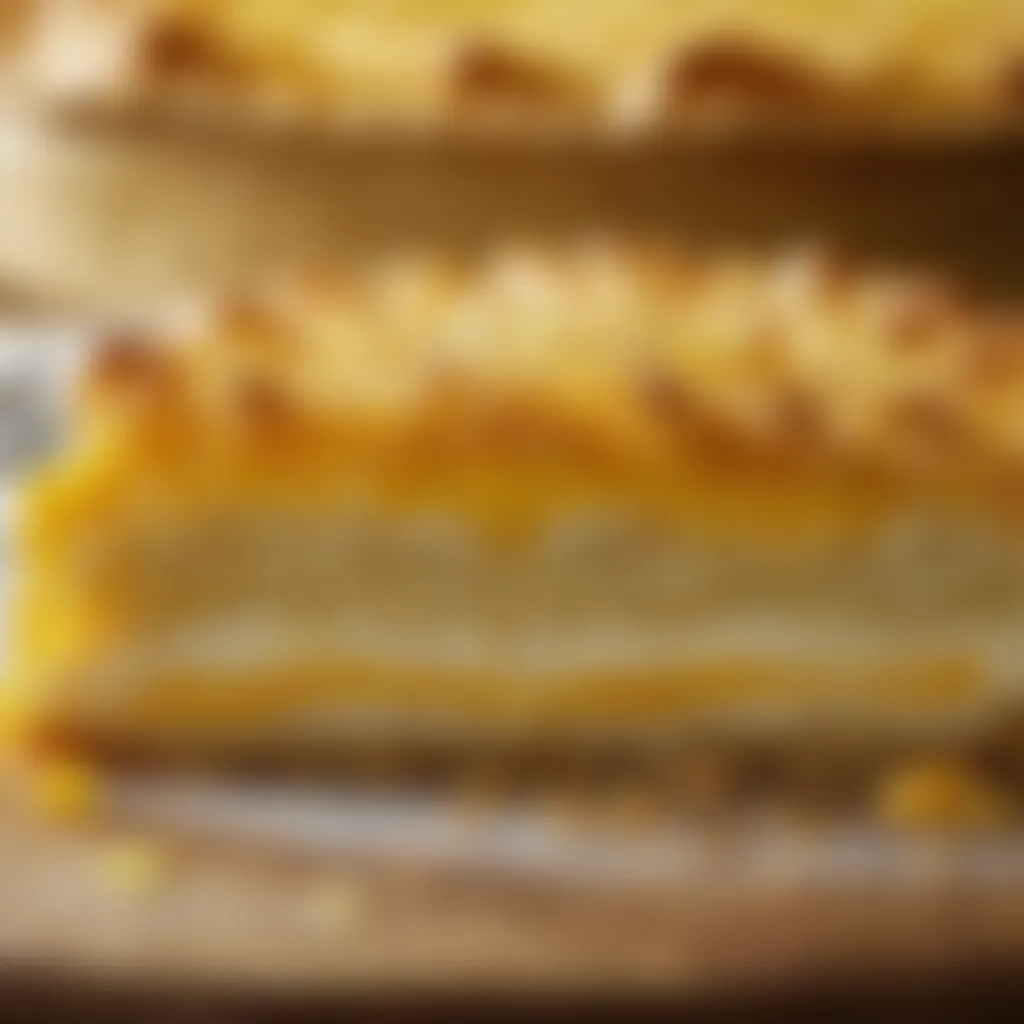
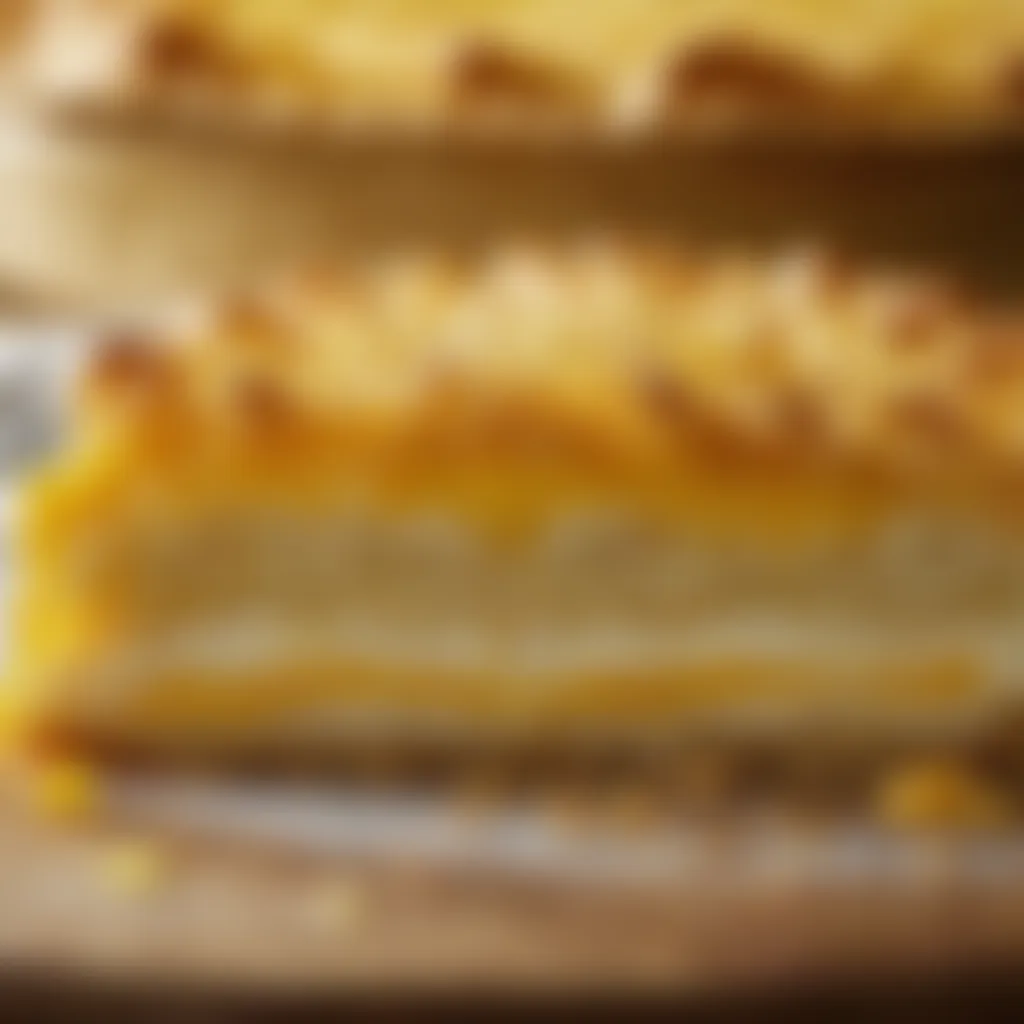
- Mixing the Dry Ingredients: Start by combining your rye flour, baking powder, and salt in a large mixing bowl. Stir well to ensure that the baking powder is evenly distributed throughout the flour.
- Adding Water: Gradually add lukewarm water to your dry mixture, stirring continuously. You want to form a soft but workable dough. If you find it too sticky, sprinkle in a bit of extra flour.
- Kneading: Turn the dough onto a floured surface and knead it gently for about 5 to 10 minutes. Unlike other bread, Hverabrauð doesn't need an elaborate kneading process—just enough to blend everything nicely.
- Resting the Dough: Allow the kneaded dough to sit for about 30 minutes, covered with a damp cloth. This resting period is vital as it helps the gluten develop, thus enhancing texture during baking.
Baking Process
Finally, it’s time to bake your Hverabrauð, turning the raw dough into a steaming loaf of traditional Icelandic bread:
- Preheat the Oven: Set your oven to a moderate temperature, around 375°F (190°C). It prepares the atmosphere for that perfect, golden crust.
- Shaping the Dough: After resting, shape your dough into a round or oval loaf, depending on your preference. You can also form smaller balls for individual servings.
- Placing in the Oven: Place the shaped dough onto a baking sheet lined with parchment paper. Pop it into your preheated oven and let it bake for about 30 to 40 minutes, or until the crust is firm and slightly darkened.
- Cool Down: Once baked, remove the bread from the oven and let it cool on a wire rack. This cooling step is crucial; it allows the steam inside to settle, ensuring the bread maintains its structure.
Tip: The beauty of Hverabrauð lies not only in its delicious taste but also in its texture. To check doneness, tap the bottom of the loaf—if it sounds hollow, you’re good to go.
Crafting Hverabrauð is indeed a labor of love, each step echoing centuries of Icelandic tradition. The careful selection of ingredients combined with the precise techniques guarantees a loaf that is not only pleasing to the palate but also rich in heritage. This bread, when served warm, embodies the warmth of Icelandic hospitality.
Serving Suggestions
When it comes to Hverabrauð, the pleasure doesn't just stop at baking. Serving this bread is an experience that can enhance the flavors and create connection among diners. Understanding the best ways to serve it is crucial. It allows you to honor its traditional roots while introducing personal flair. People eat not just to fill their bellies; they also want to enjoy a ritual, a slice of culture on their plates.
Traditional Accompaniments
In Iceland, serving Hverabrauð is often accompanied by a variety of traditional toppings. Here are some classic pairings:
- Lamb Livars: This is a smoked lamb, rich in flavor and texture. It pairs perfectly with the earthy tones of Hverabrauð, creating a hearty bite.
- Butter and Cheese: A simple yet indulgent option. Spread soft, creamy butter on a slice of baked bread and add a slice of traditional Icelandic cheese, such as Gammalost, for a delightful snack.
- Rhjúpa (Beetroot): Pickled beet gives a sweet and tangy contrast to the bread's slight sweetness. It can provide a refreshing burst of color on the plate.
- Skyr: This Icelandic dairy product serves as a versatile accompaniment. Whether used simply as a dip or topped with berries, it can enhance the flavor profile while adding a creamy texture.
Presenting Hverabrauð with these accompaniments not only showcases the cultural roots but also elevates the entire dining experience.
Modern Pairings
As the culinary world evolves, so do the ways we enjoy traditional bread like Hverabrauð. Here are some modern pairing ideas that can add a twist:
- Avocado and Poached Egg: A trendy take, this combination brings a creamy richness that balances well with the darker notes of the bread.
- Smoked Salmon with Cream Cheese: This classic pairing often seen in brunch menus can also work wonders with Hverabrauð. The savory and smoky fish complements the bread’s unique flavor.
- Vegetable Spreads: Think roasted red pepper or hummus, which not only makes for a delightful vegan option but also adds depth with their spices.
- Olive Tapenade: This Mediterranean spread, rich in flavors, can transform Hverabrauð into a gourmet delight, showcasing a fusion of culinary traditions.
Mixing these modern elements with traditional Icelandic bread not only makes for a unique culinary experience but can also spark conversations around the table.
"Food brings people together. It connects cultures and creates memories, reminding us of where we come from, while also letting us explore new horizons."
With these serving suggestions, you can ensure that your Hverabrauð is not just delicious but also a centerpiece of your meal, inviting stories and laughter around the table.
Regional Variations
When it comes to Hverabrauð, regional variations certainly paint a colorful picture of Icelandic bread-making traditions. Each corner of Iceland brings its own flair and innovation to this beloved staple, influenced by local resources, culinary practices, and cultural habits. Understanding these variations goes beyond mere curiosity; it opens a window into the culinary identity of the Icelandic people. Each variation serves as a testament to the adaptability of traditions, showcasing how local elements can shape a recipe’s essence.
Differences Across Iceland
Not all Hverabrauð is created equal. For instance, in the westfjords, you might encounter a denser bread, often enriched with ingredients sourced from the land—perhaps even a hint of regional herbs or wild grains. Meanwhile, in Reykjavik, you’ll find a lighter, fluffier loaf, reflecting the city’s modern approach to Icelandic cuisine.
Furthermore, in more remote areas, traditional methods take precedence. Bakers there might utilize geothermal ovens or cook their bread underground, a practice handing down age-old techniques that connect them to their ancestors.
Here’s a rundown of a few differences:
- Westfjords: Denser, rustic bread with local herbs
- Reykjavik: Lighter, airy texture with a modern twist
- Northern regions: Tends to incorporate more fish or game meats as sides
These subtle yet significant differences reveal how local culture and available resources can impact food preparation.
Influence of Geography
Geography plays a pivotal role in how Hverabrauð is made and enjoyed. The rugged landscapes of Iceland foster a unique environment that shapes the flavors and techniques. Coastal areas often lead to the inclusion of seafood as part of a meal, turning the focus from just the bread to what accompanies it.
Similarly, the remoteness of certain rural areas limits access to ingredients, which in turn leads to a greater reliance on what’s available, such as wild berries or locally harvested grains. This geographical influence ensures that even within a single recipe, a spectrum of flavors and textures emerges across the country.
"The land you live on shapes the food you create. It’s a dance of soil and sea, of seasons and traditions."
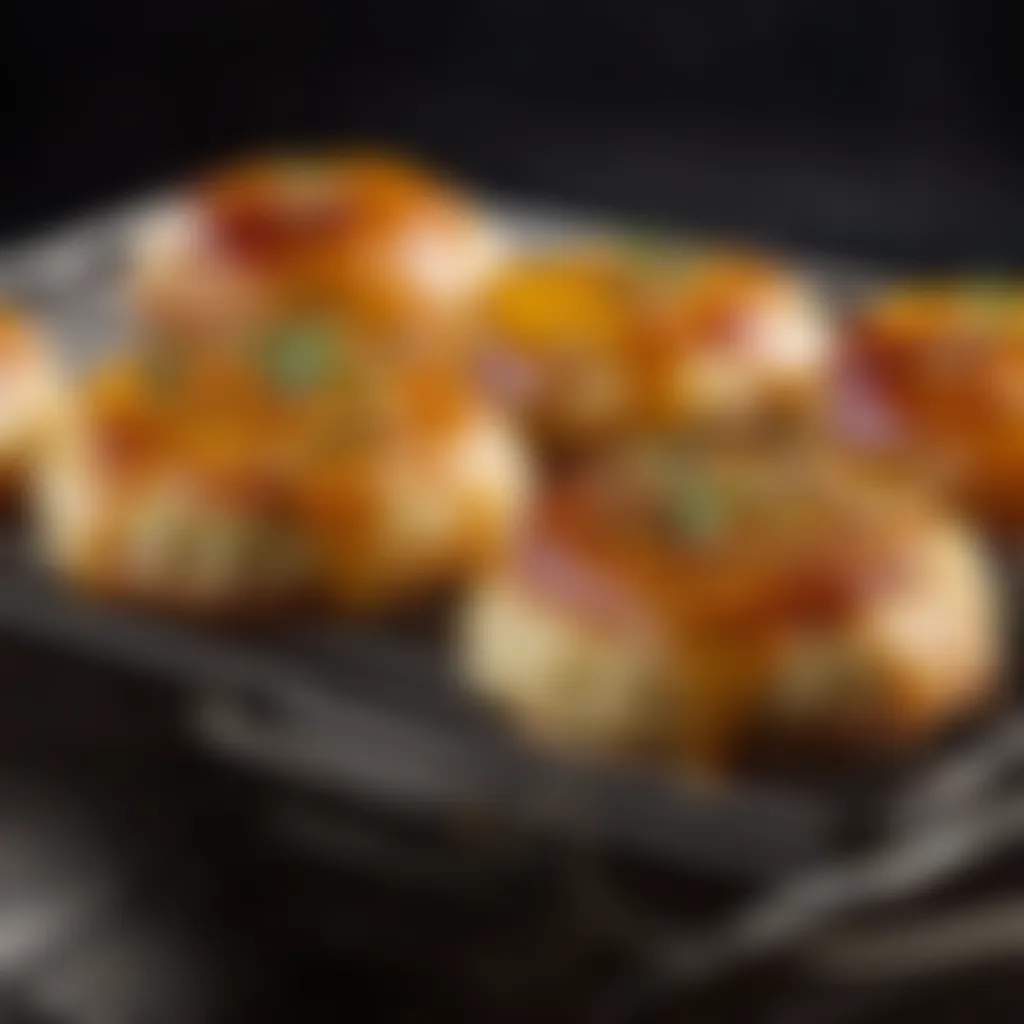

Nutritional Aspects
Eating well is tightly woven into the fabric of Icelandic culture, and Hverabrauð exemplifies this connection beautifully. Often seen as more than just a side dish, this bread carries myriad nutritional benefits that enhance not only the meals it accompanies but also the overall health of those who consume it.
Nutritional Breakdown
Hverabrauð is baked using ingredients that are not only traditional but also provide significant health benefits. Understanding these components gives insight into why this bread holds an honored place on Icelandic tables.
- Whole Wheat Flour: The base of Hverabrauð, whole wheat flour is packed with fiber, vitamins, and minerals. Its high fiber content helps in digestion and supports heart health.
- Baking Soda: This ingredient often replaces yeast in many traditional recipes, offering a unique texture while being lower in calories. Plus, it helps to create that tender crumb.
- Water: Simple yet vital, water makes up a significant portion of the bread. Staying hydrated is key for overall health, and using fresh Icelandic water can add to the flavor.
- Natural Ingredients: Traditionally, Hverabrauð can include various seeds, like flax or sunflower seeds, adding healthy fats and proteins, which promote satiety and energy balance.
The combination of these elements contributes to a nutritious loaf that is dense and filling, making it an appealing option for anyone looking to maintain a balanced diet.
Health Benefits
Beyond simply being a delightful addition to a meal, consuming Hverabrauð offers a range of health benefits that can be appreciated by health-conscious individuals:
- Rich in nutrients: It incorporates essential nutrients such as B vitamins, iron, and magnesium, which are crucial for energy metabolism and overall bodily function.
- Weight management: Due to its fibrous nature, Hverabrauð keeps you feeling full longer, potentially aiding in weight control when part of a balanced diet.
- Heart health: The whole grains and seeds contribute to lower cholesterol levels, promoting cardiovascular wellbeing.
"A slice of Hverabrauð is not just a bite of bread; it's a wholesome piece of Icelandic heritage tied to flavors and health."
With these nutritional aspects in mind, it's clear that Hverabrauð is not simply a delicious representative of Icelandic cuisine, but a well-rounded choice that can boost your health while adding rich flavors to your table.
Hverabrauð in Modern Culinary Scene
The culinary landscape is an ever-changing canvas, and at times, even the oldest of traditions find their way back into the spotlight. Hverabrauð, with its deep roots in Icelandic culture, is no exception. Its importance in today's food scene cannot be overstated, as people increasingly seek authenticity and uniqueness in their dining experiences. This treasured bread embodies a sense of history while also adapting to contemporary preferences and health trends.
Contemporary Bakeries
In recent years, a wave of artisanal bakeries has sprung up across Iceland, celebrating local ingredients and traditional methods. These establishments have taken Hverabrauð beyond its historical confines, allowing it to evolve without losing its essence. Many bakers experiment with different grains and flavors, but always pay homage to the bread's original preparation methods.
For instance, some modern bakers use locally-sourced whole grains, giving the bread a richer, nutty flavor. Others have started incorporating seeds like sesame and flax, resulting in a crunchy texture that pairs well with its soft inside. However, it’s crucial to note that every loaf honors the tradition of being cooked underground.
A common sight in bakeries is a push towards sustainable practices, where wood from local trees might be used in the baking process, intertwining a respect for Iceland’s natural resources with delicious results. Customers visiting these bakeries are not just there to buy bread; they’re partaking in a slice of Icelandic heritage.
- Artisan Techniques: Many bakers emphasize hand-kneading and fermentation, which allows for better flavor development.
- Local Ingredients: Utilizing locally-sourced grains, herbs, and even native flora helps support local farming and ensures freshness.
With such innovation, Hverabrauð has captured the interest of both locals and tourists alike. Its unique flavor profile and historical significance resonate with those who appreciate cultural cuisine in a world inclined towards commercialism.
Recognition in International Cuisine
Hverabrauð is starting to carve out its niche on the global culinary map. It’s fascinating to observe how an Icelandic staple is influencing and being embraced by international cuisines. Chefs and food enthusiasts around the world are increasingly drawn to try creating their versions of this traditional loaf, often based on the mesmerizing tales of its underground cooking method.
This growing recognition is part of a larger trend where cuisines from smaller nations are gaining traction beyond their borders. The charm lies in the story of how Hverabrauð is traditionally baked near hot springs, and its association with gatherings and celebrations. As such, innovative chefs adopt these themes, incorporating the bread into fusion dishes.
In fine dining restaurants, you might find Hverabrauð offered alongside regional dishes or adapted into gourmet sandwiches. It adds a rustic touch that completes menu concepts focusing on authenticity and locality.
- Culinary Festivals: Notably, food festivals celebrating Nordic cuisines have begun showcasing Hverabrauð, allowing chefs to experiment and share ideas.
- Social Media Influence: Platforms like Instagram contribute to its rise in popularity as food lovers share pictures and recipes, creating a buzz around this bread among gastronomes.
"Hverabrauð is not just food; it's a connection to our past and an invitation to explore the richness of Icelandic heritage in every bite."
In essence, the modern culinary scene embraces Hverabrauð with open arms. It acts as a bridge between generations, preserving the life stories woven into it while inviting new interpretations from culinary artists. As this traditional bread continues to gain fame, it does not merely exist on menus; it's becoming a beloved ambassador of Icelandic culture.
Ending
Reflecting upon the essence of Hverabrauð, it's clear that this traditional Icelandic bread represents not just a culinary delight but a rich tapestry of history and culture. By understanding its roots and preparation, one begins to appreciate the layers of tradition that this bread carries.
Final Thoughts on Hverabrauð
Hverabrauð is more than merely a recipe; it embodies the resilience of Icelandic culture. As you knead the dough and watch it rise, you become a part of a story that stretches back generations. While the ingredients and methods may adapt, the soul of Hverabrauð remains unchanged. It brings warmth and comfort, serving as a bridge between the past and the present. Those who partake in making and enjoying this bread experience a connection to the land and the people of Iceland. This aromatic bread, often enjoyed during special gatherings, invites everyone to sit down, share, and partake in a moment of togetherness.
The Future of Traditional Bread in Iceland
As society evolves, so do our eating habits and preferences. The future of traditional Icelandic breads, including Hverabrauð, hinges on the ability to remain relevant amidst modern culinary trends. Propelled by growing interest in authenticity and sustainable practices, traditional recipes are experiencing a delightful resurgence. Home bakers, local cafés, and even gourmet restaurants are reintroducing Hverabrauð in innovative settings while keeping its traditional roots intact.
In particular, the rise of the ‘slow food’ movement emphasizes cooking with care, following traditional methods, and using local ingredients. This alignment lends Hverabrauð a new lease on life. Additionally, the presence of social media platforms allows for the sharing of recipes, techniques, and cultural stories, thereby keeping the discussion about traditional Icelandic bread alive and accessible. Moving forward, Hverabrauð has the potential not only to thrive within Iceland but also to gain attention internationally, as more people seek authentic culinary experiences that tell a story.
Ultimately, it stands as a testament to the importance of preserving culinary heritage while embracing innovation. Through ongoing conversation and exploration, Hverabrauð will surely continue to be cherished, ensuring that this beloved bread remains a staple in Icelandic homes for generations to come.







